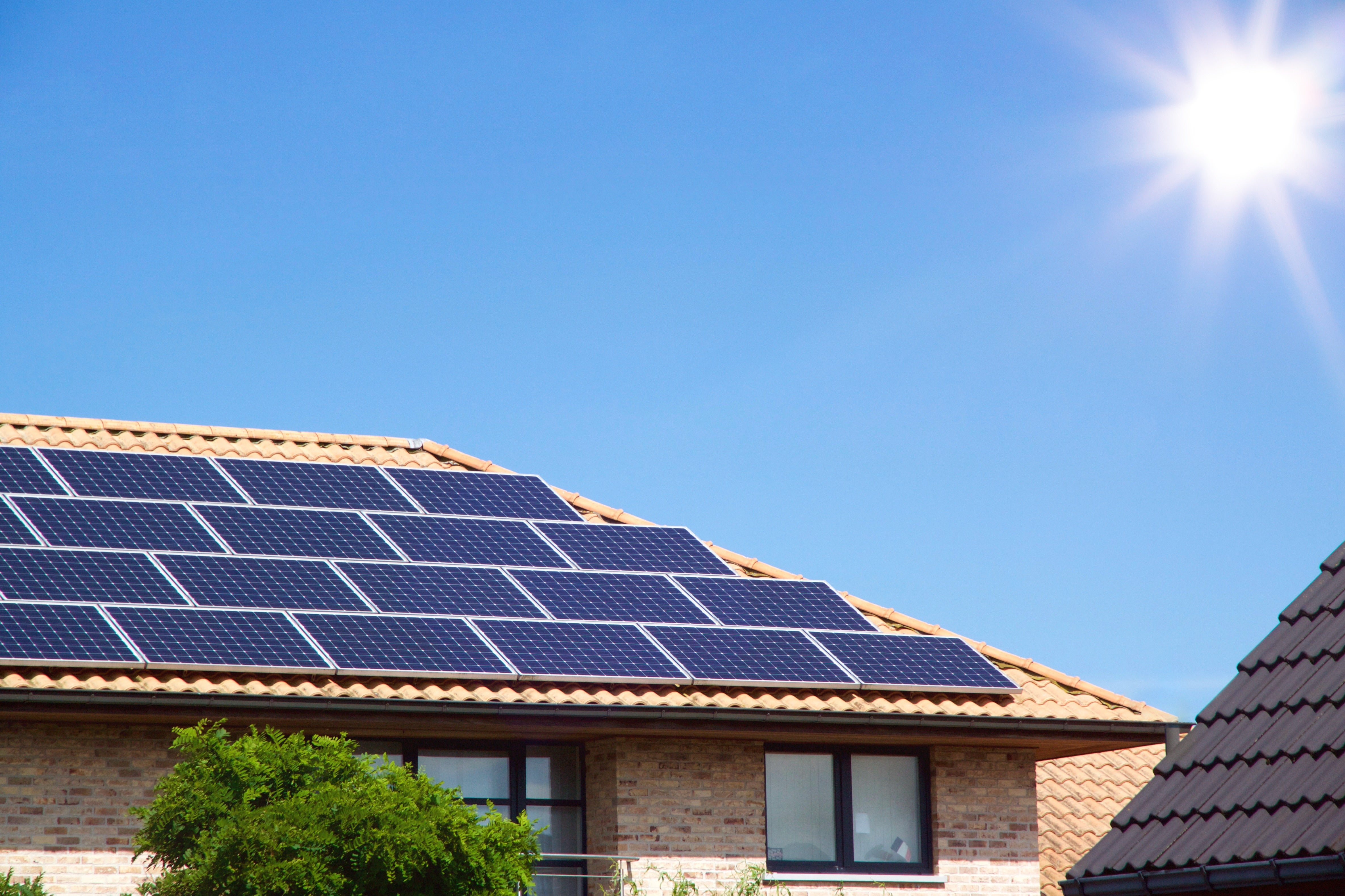方案
By Technology
公司介绍
八月 07, 2023
Share:

The number of residential solar systems is expected to grow considerably over the next five years. Once installed, these systems provide a clean and green energy source for households to power their home appliances, charge electric vehicles, and even sell excess power back to the grid. They can also provide peace of mind in the event of a grid outage. This blog looks at the main components of residential solar systems and suggests some power solutions from onsemi to make them more efficient, reliable, and cost-competitive.
Residential Solar Inverter System Overview
A residential solar inverter system includes an array of photovoltaic (PV) panels which generate a variable DC voltage. A boost converter, using a method called maximum power point tracking (MPPT) (optimize the captured energy depending on the strength and direction of sunlight), increases this voltage to a higher DC link voltage. A 1−phase DC/AC inverter then converts the DC link voltage (typically < 600 VDC) – to an AC voltage (120 to 240 V), which is then connected either to a load or the power grid.
There are different types of residential solar inverters, but the two most common are micro and string inverters. A micro inverter solar system uses multiple DC/AC inverters, each connected to a single photovoltaic (PV) panel, typically producing up to 1 kW of output power. A string inverter system combines inputs from multiple series−connected PV. However, connecting several solar panels is less efficient than a microinverter system because the entire system output is affected if one panel receives less light than the others in the series. However, they are less expensive than microinverter systems, with an inverter for each panel.

A power optimizer (a DC−DC converter with integrated MPPT) can help increase the efficiency of string inverter systems. This converts the variable DC voltage from PV panels to a fixed DC voltage, meaning low PV output from an individual panel doesn’t impact the overall efficiency.
Battery Energy Storage System
The battery energy storage system (BESS) is essential to residential solar systems. In most cases, energy is captured when it is least required - during daylight hours when people are away from home. Using a battery to store energy provides the flexibility to use power when needed – in the evening when the family is home. A bi−directional converter connects the BESS to the solar system. During the day, when PV panels produce power, the converter charges the battery array. At night, when panels are not generating energy, the bidirectional converter releases the stored energy from the batteries to drive loads.
DC−DC Boost Converter
The single boost DC-DC converter is the most common non−isolated topology for residential systems, while the flyback converter is popular when isolation is required. Both topologies are low-cost and have a narrow form factor.
DC-AC Inverter
Inverters can be constructed using a variety of topologies, like, for example, the HERIC H6.5 converter featuring onsemi’s NXH75M65L4Q1 IGBT module. This design does not require a transformer, reducing overall system weight, size, and cost. This topology resolves leakage current issues caused by the common mode (CM) voltage acting on the parasitic capacitances of the PV array.

Bi-directional DC−DC converter
The bi-directional DC−DC converter charges and discharges the battery in the energy storage system. This typically uses a resonant CLLC or dual active bridge buck−boost isolated topology. It supports a wide input and output voltage range and uses zero voltage switching (ZVS) to improve efficiency. It also provides safety by isolating the battery pack from the PV panel.
IGBTs for Solar Systems
onsemi also offers 600 V and 650 V rated silicon IGBT. IGBTs incorporate a narrow mesa, wide trench width Field Stop 4 (FS4) technology, with latch immunity and smaller gate capacitances. The Field Stop layer increases the blocking capability and reduces drift layer thickness. This in turn lowers conduction and switching energy losses to less than 30 J/A. It also reduces thermal resistance, allowing for a smaller chip and package size. The FS4 IGBT design exhibits better light load power efficiency in a 4kW boost converter than the Field Stop 3 (FS3) design, demonstrating parity to the best competitor. These features help enable higher power efficiency solar inverters.

Silicon Carbide Further Improves Residential Solar Performance
Silicon Carbide (SiC) devices enable smaller inverters in residential solar systems while providing better performance than silicon-based devices. onsemi 650 V EliteSiC discrete MOSFETs have low RDS(ON) across both VGS and temperature and can be driven using a negative gate voltage, which improves noise immunity and avoids false turn-ons when used in bridge topologies.

Accelerating your Residential Solar System Design
onsemi provides an extensive portfolio of products and tools to simplify component selection for a solar system, including reference designs like the SECO−HVDCDC1362−40 W−GEVB 40 W SiC high voltage auxiliary power supply. This includes everything (user manual, bill of materials, Gerber files, etc.) required to speed up product development. onsemi also provides SPICE models for system designers wishing to perform more advanced system evaluation and development.
Read a white paper “Optimizing Residential Solar Energy Systems for Efficiency, Reliability, and Cost” and learn more about residential solar solutions.
onsemi’s long-term expertise and leading role in renewable energy generation, power management, and energy conversion helps customers across the globe handle the challenges of Energy Storage Systems. We create suitable solutions for the evolution of the power grid.